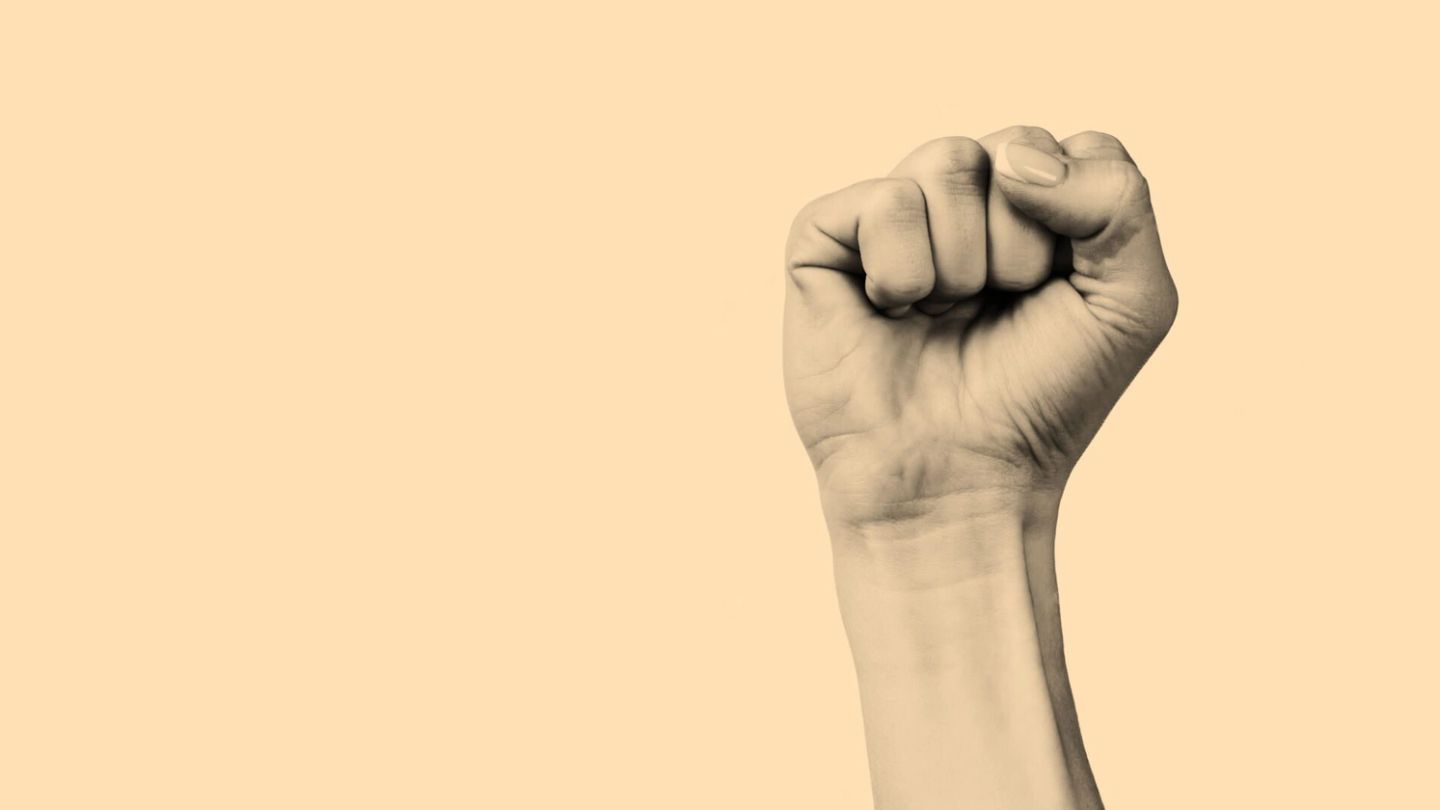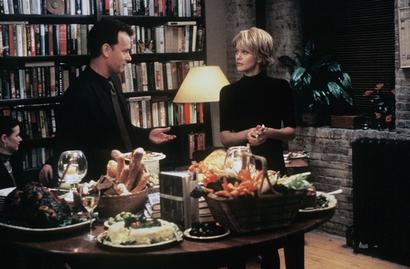

Gentleman’s Journal’s guide to supporting International Women’s Day
To mark this year’s occasion, here's a small selection of everyday actions that can help move the needle forward
Words: Josh Lee
One film that’s been the talk of the office lately is She Said, Maria Schrader’s adaptation of the book about two New York Times journalists who facilitated the downfall of Harvey Weinstein, the once powerful film producer whose seminal hits scored waves of Oscar wins, but who now faces his remaining years in prison.
The film’s virtues are all there to see. There’s the steely heart of Carey Mulligan’s Megan Twohey and the swathes of empathy in Zoe Kazan’s Jodi Kantor. You’ll likely note that great howls of drama are largely softened, with a preference for a measured render of the monotonous dig-dig-digging of the reporters’ work at hand. And, if you’re keeping score, unlike other big-screen features of this ilk – Spotlight, The Post – the figures at the centre of the screen are delineated not just for the task that they’ve been charged with, but for the individuals they exist as beyond the walls of their newsroom: mothers, partners, women.
If you have a spare few hours on a Friday evening, it is an important watch that reminds us of the foundations on which the #MeToo movement was built – and all that which existed before and after it.
Which brings us to International Women’s Day. Indeed, though stretches of progress have been made since the curtain was lifted on Hollywood’s dark operations – the cover-ups, the abetters, the NDAs, the deep roots of it all – there is still, no doubt, far to go, not just when it comes to the abuse of power in the workplace, but in all aspects of the women’s rights movement, gender parity and reproductive rights among them.
To mark this year’s occasion, we at Gentleman’s Journal have decided to highlight a small selection of everyday actions that can help move the needle forward, however incremental or big the strides towards progress that they may bring about.
We discuss the literature that helps open up the world of feminism; the ventures that are excelling in male-dominated industries; and we’re also encouraging you to sample a few libations from our favourite women-led distilleries.
Though these measures may not have the large-scale promises of a long-winded manifesto, great leaps in change can only start with small, everyday steps – ones whose intent eventually speak volumes.
Turn a New Page
The pen is mightier than the sword, so they say. So, as a mark of support, we suggest that you expand your reading repertoire through the exploration of female literature. Though authors, such as Chimamanda Ngozi Adichie, Sally Rooney and Donna Tartt, are figureheads of the print landscape, on the whole, female writers remain overlooked and under-appreciated, a byproduct of the stigma associated with the female tongue.
Not only can you support inclusivity by choosing female writers for your nighttime read, but perhaps also venture towards texts that tackle issues women encounter daily, understanding and educating yourself as you turn the page. Our recommendations include Girl, Woman, Other by Bernardine Evaristo, an exploration into female identity; Herland by Charlotte Perkins Gilman, where female dependence is subverted; and The Handmaid’s Tale by Margaret Atwood, which is sadly ever-relevant. Mary Beard’s Women & Power and Why Has Nobody Told Me This Before, by Julie Smith, are also fine places to start.
Speak Up
To further bolster the literary side of things, engage in conversations about gender equality with family, friends and colleagues – could your office benefit from having an all-women delegation that discusses how work conditions (from maternity leave to parity of pay) can be improved, for example?
Or if there’s an unsavoury comment fired across the desks, be the one to call that person out. If you’ve been on the Tube in the past months, you may have seen an influx of posters that address sexual harassment on public transport, whether that’s bringing to attention the issues of intrusive staring or outlining the ways in which you can defuse situations of harassment. Though everyday signage can slip in and out of our attention, we encourage you to read these specific ones in order to help harness, and normalise, an active-bystander culture – one that shouldn’t exist just on the daily commute, but should also be taken into your place of work, home and off-duty hours.
Political, Financial and Social Support
A change in habits is only one part of the fight; you should also consider the applied ways in which you can foster change. Politically speaking, support candidates running for office – both on a council and national level – who support women’s rights and gender equality; though the big wheels of big government turn lethargically and slowly, votes can help put the right people in place, especially those who aim to change or bring about legislation that bends the moral arc ever closer towards justice. As myriad movements across the globe – civil rights, worker’s rights – have illuminated, change not only comes from the top-down, but can also stem from bottom-up grassroots actions.
Then, there’s the notion of backing your stance with financial support – a few of our favourite UK-based organisations and causes include Women’s Aid, The Fawcett Society, Rosa, and the Women’s Equality Party, all of which have missions that come together to eradicate domestic abuse, promote gender equality and advocate for women’s rights.
Finally, given the ubiquity of digital screens and smartphones, make the most of social-media’s power and pull – one small habit we’d encourage is that you amplify the voices of women by sharing their content on a platform of your choosing, whether that’s an article they’ve written, an award they’ve won, a restaurant they’ve opened, news that draws attention to topic of injustice, or sharing information about events that they may be participating in.
Support female tailors and garment workers
This being Gentleman’s Journal, we have to spotlight one of the areas we love most: style. If starting and/or running a business wasn’t a tough hand in itself, doing so in a field that has been dominated by men for centuries presents myriad additional challenges. Today (and forever more), we’re celebrating those talented and hardy entrepreneurs that dived in at the deepest of ends and resurfaced triumphant, with flourishing, successful businesses to show for it.
Four of our favourites are Daisy Knatchbull and Emma Willis (of The Deck and Emma Willis, respectively), who took it to Savile Row and Jermyn Street and planted the flag for female-led tailoring, and Joanna Broughton and Margaret Barbour, who helm heritage brands Truefitt & Hill and Barbour and brought them into the new age.
Regarding the industry as a whole, we’d also like to bring more attention to female garment workers – the ones behind the scenes who are largely responsible for the minutiae of the work: the threading of needles, the blistered hands, the cuts, the sweat, the long hours – by re-emphasising that fairer laws need to be implemented, not only to hold accountable those brands that allow for unfair practices and operations (low pay, illegal conditions), but to also protect and empower the women and girls that hold up this industry. To support the platforms that are the voice for those who don’t have their own, we recommend brushing up on Care International, Labour Behind the Label, and The Circle.
Embrace the experimental world of female-owned distilleries
Next time your drinks cabinet runs dry, try to look beyond the usual spirited suspects when restocking. There’s a whole host of female-owned gin brands and vodka producers just waiting to be uncorked and enjoyed, many of which are doing exciting things in their respective sectors. But perhaps the most radical movers, shakers and drinks-makers are working in the women-led whisky industry.
Brenne is a vanilla-tinged French single malt, owned and operated by former ballerina Allison Parc. SIA, a cocktail-ready blend, swirls together whiskies from the Highland, Lowland, Speyside and Islay regions of Scotland. But our first choice? Uncle Nearest 1856, an award-winning American whiskey that’s both black-owned, female-led — and has just landed in Britain.
Become a Gentleman’s Journal member. Find out more here.


